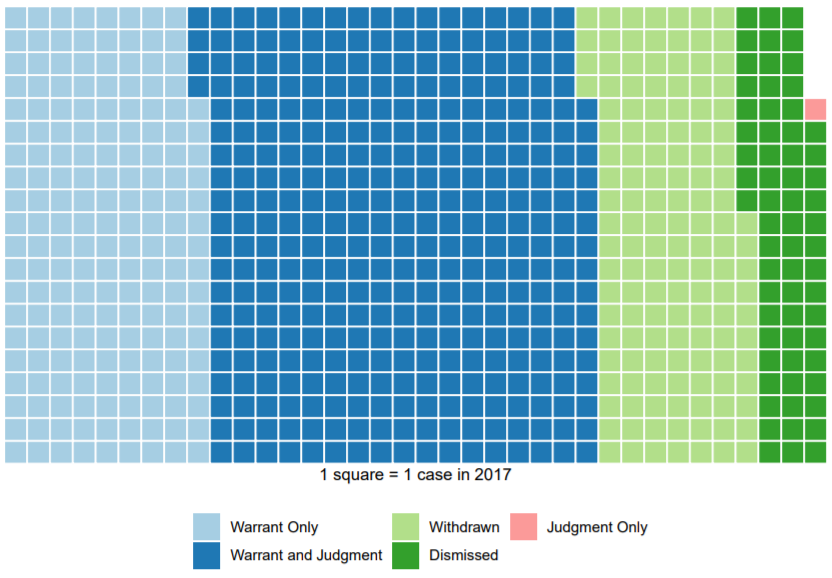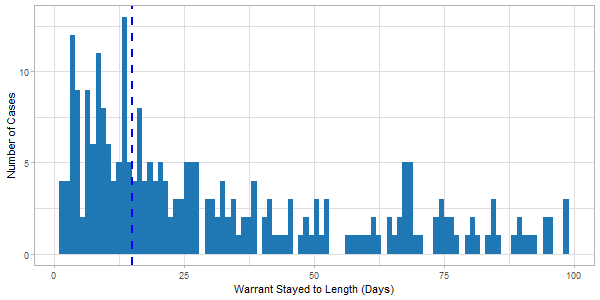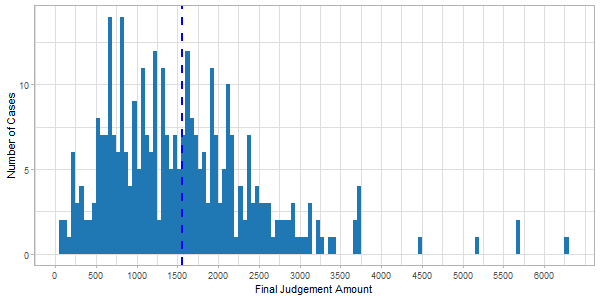Forrest Hangen

Eviction Warrants Are the Norm
The vast majority of cases culminated in an eviction warrant to be issued (over 70%). Counting all cases heard in front of a judge (excluding cases that were withdrawn) almost all these cases (88.8% of cases) culminated in an eviction warrant to be issued and over half of all theses cases (58.5%) received a judgement.
Dismissals Are Rare
Less than 10% of cases are dismissed by a judge (8.9% ± 2.1%).
Adjournments Are Also Rare
Only 6.7% (± 1.8%) of cases were adjourned to a later date, meaning that the vast majority of cases are decided by a judge on the same day those cases are called to court.
Eviction Warrant “Stayed To” Dates
In most cases where an eviction warrant is issued (75.2 ± 4.4%), the judge delays the enforcement of the eviction warrant for some number of days. In these cases, a stayed warrant won’t be enforced if the tenant pays back rent owed before the stayed-to date.
Immediate vs. Stayed Eviction Warrants

Stayed Eviction Warrants Are The Norm
Only about a quarter (25.1% ± 4.4%) of warrants issued were immediate warrants (meaning the warrant was issued the same day the court decision was made).
Two Weeks or Less
The median stated to date is 15 days, meaning that half of tenants were given about 2 weeks or less before an eviction warrant would be issued.
Distribution of Warrant Stayed to Dates

Judgment Amounts
In cases where a tenant owes money to the landlord (e.g., for unpaid rent, damages, etc.), a judgement may be issued with an eviction warrant. These amounts can vary widely, with the lowest amount in the data at $54, the highest at $6,300, and an average amount of around $1,556.
Distribution of Judgement Amounts

This histogram displays the frequencies of the judgement amounts in U.S. dollars.